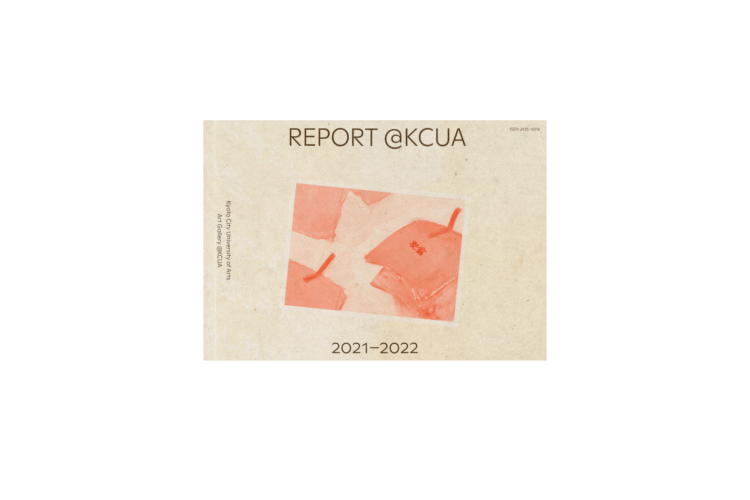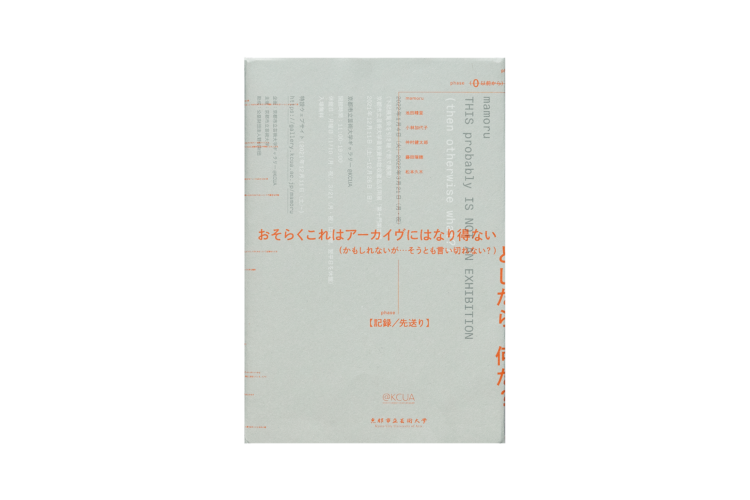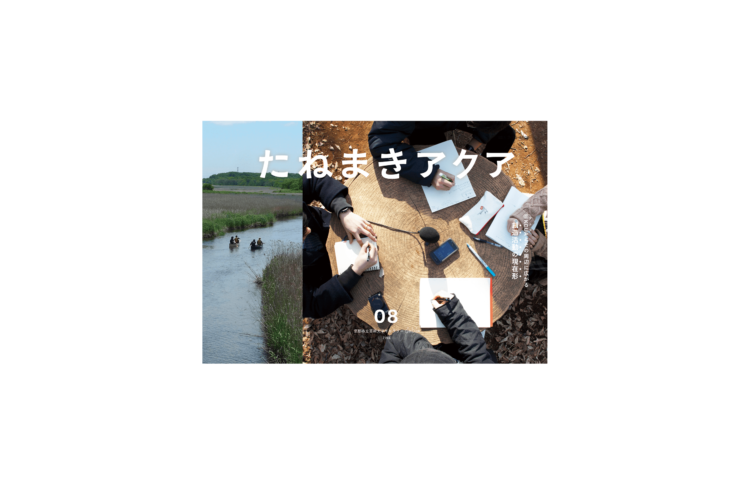REPORT @KCUA
Hako Irie/Kagaku Murakami/Yohei Watanabe
From University Art Museum, Kyoto City University of Arts Collection Exhibition, 2020
With cooperation of University Art Museum, Kyoto City University of Arts
Translated by William Andrews

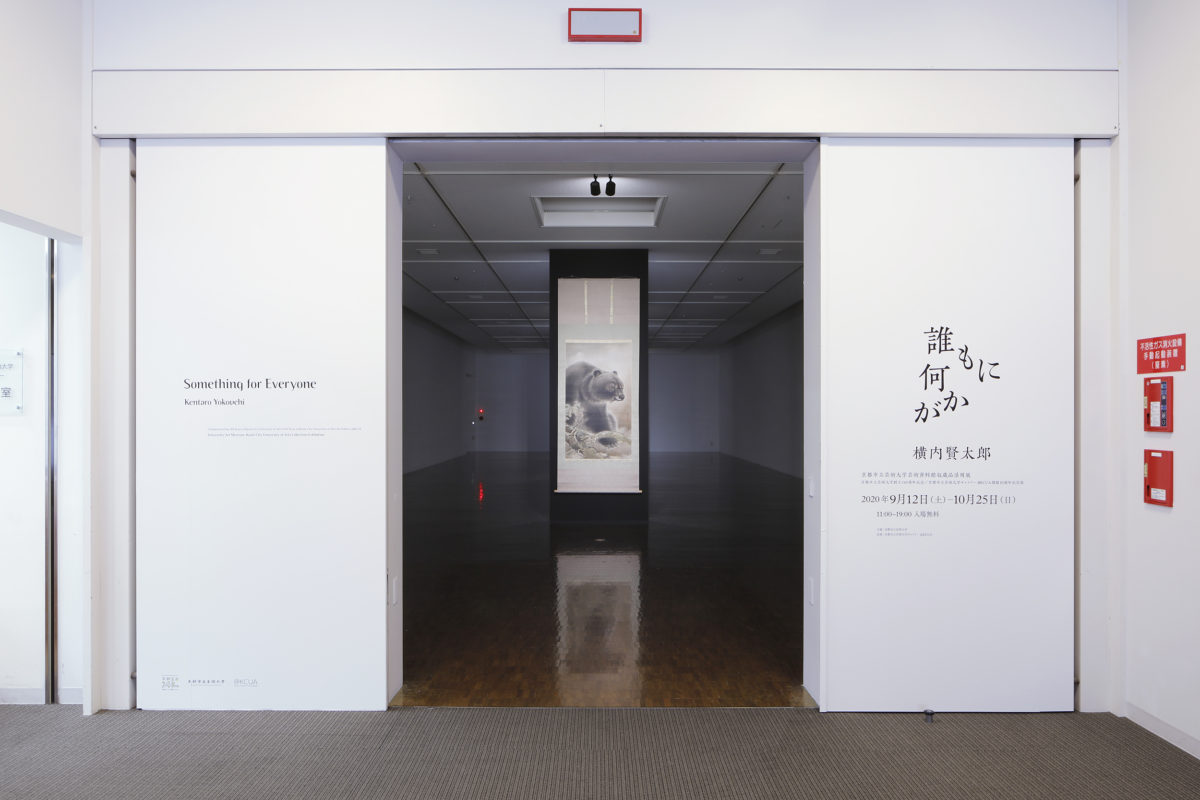
The University Art Museum features a collection of work by alumni from the Meiji period (1868–1912) to the present. Tracing these artworks in chronological order reveals insights about how artistic expression has shifted with the times. Of particular note among the works in the early period of the collection, we can detect that animals became a common choice of subject following the opening of what is now Kyoto City Zoo in 1903, and the distinct influence of Western-style painting learned from Seiho Takeuchi and other teachers at the university at the time that they had acquired from trips to Europe. The exhibition considered what these “encounters” provided for the artists as well as how they were received in the graduation works of three painters: Hako Irie (1887–1948), Yohei Watanabe (1889–1912), and Kagaku Murakami (1888–1939).
Introduction
These three artworks were painted between 1905 and 1907 as final projects by graduating students at the Kyoto Municipal School of Arts and Crafts, which was then a middle school (in the prewar Japanese education system). They were painted when the artists were roughly the same age as graduating high schoolers today. The School of Arts and Crafts was a kind of vocational college that gave students technical training, though its curriculum also stressed more general enrichment and refinement. As such, compared to when the school’s predecessor, the Kyoto Prefectural School of Painting, was established in 1880, the time spent on learning technical skills had greatly decreased. The education that took place at the School of Arts and Crafts was fundamentally little changed from the various forms of painting education ongoing since the Edo period (1603–1868). Even after the start of the Meiji period in 1868, the Kyoto art world was still dominated by the Edo-era Maruyama and Shijo painting schools. The painters of these three works—Hako Irie, Yohei Watanabe, and Kagaku Murakami—were taught by Seiho Takeuchi, Shunkyo Yamamoto, and Hobun Kikuchi, all artists who very much belonged to the Maruyama and the Shijo schools. These two art schools are regarded as having placed importance on what was called shasei: somewhat different from what we would call realism in Western painting (such as the use of shading to make something appear three-dimensional), this refers to a true-to-life style that emphasizes replicating the vivid vitality and spirit of the subject matter in the picture.
As opposed to the Maruyama school’s constant and faithful pursuit of that kind of naturalistic expression of shasei, the Shijo school valued painting a picture directly from the actual subject matter with the aim of a pictorial expression possessing a high affinity with poetry and the literary world, as such frequently incorporating that poetic sentiment into the work. A representative example of this is the tsuketate brush technique that, when painting a single line, mixes ink to water to apply shading, resulting in a line that retains the dark and faint parts of the ink. By skillfully varying the dark and faint parts, a single line is rendered with a sense of volume. Through the shading of each brushstroke, a kind of abstraction effect comes into play when a brushstroke is omitted. The object of the painters’ interest then focused on the extent to which they could express the essence of the subject of the painting in as few brushstrokes as possible. Hako Irie, Yohei Watanabe, and Kagaku Murakami’s painting teacher Seiho Takeuchi pursued the extent to which he could incorporate minimized brushstrokes and abbreviation into a picture, attempting to compose paintings with only what was necessary and omitting what was not. An easy comparison with tsuketate is the style of the Kano school, dominant in the Tokyo art world, with its emphasis on brushstrokes. Employing outlines, the expression thus becomes firmer and creates a stronger impression. Among the graduation works at the School of Arts and Crafts were pieces painted very consciously with outlines, but these three works make deft use of tsuketate through soft strokes without outlines.
While a member of the faculty, Seiho Takeuchi viewed various Western artworks in Europe and, upon his return to Japan, taught students about the beauty of Western art as well as, through comparison, the merits of Japanese art or painting. During this, an understanding of space apparently emerged as a particularly major theme. A challenge he bestowed upon them was how to conjure up a space within a single sheet of paper or a single piece of silk when painting with a brush. Each of these three works shows the proficient forethought the artist gave to that question. At the time, it was not a period like the Meiji Restoration (1868), when the country wanted to expel Western influences under a mindset of simplistic nationalism, but perhaps rather a period when, as Japanese people began to gain a nebulous sense of their nation’s place within the world following the First Sino-Japanese War and Russo-Japanese War, the art of the West more firmly entered their field of view. Against this backdrop, there emerged works like Yohei Watanabe’s Foxes, a nihonga (Japanese painting) that seems almost like yoga (Western painting), and Kagaku Murakami’s Brown Bear, in which the artist deploys tricks to achieve balance within the painting, placing in the foreground tree branches rendered with bold Kano-style outlines while also adopting Western pictorial styles in layering fine lines to express the face.
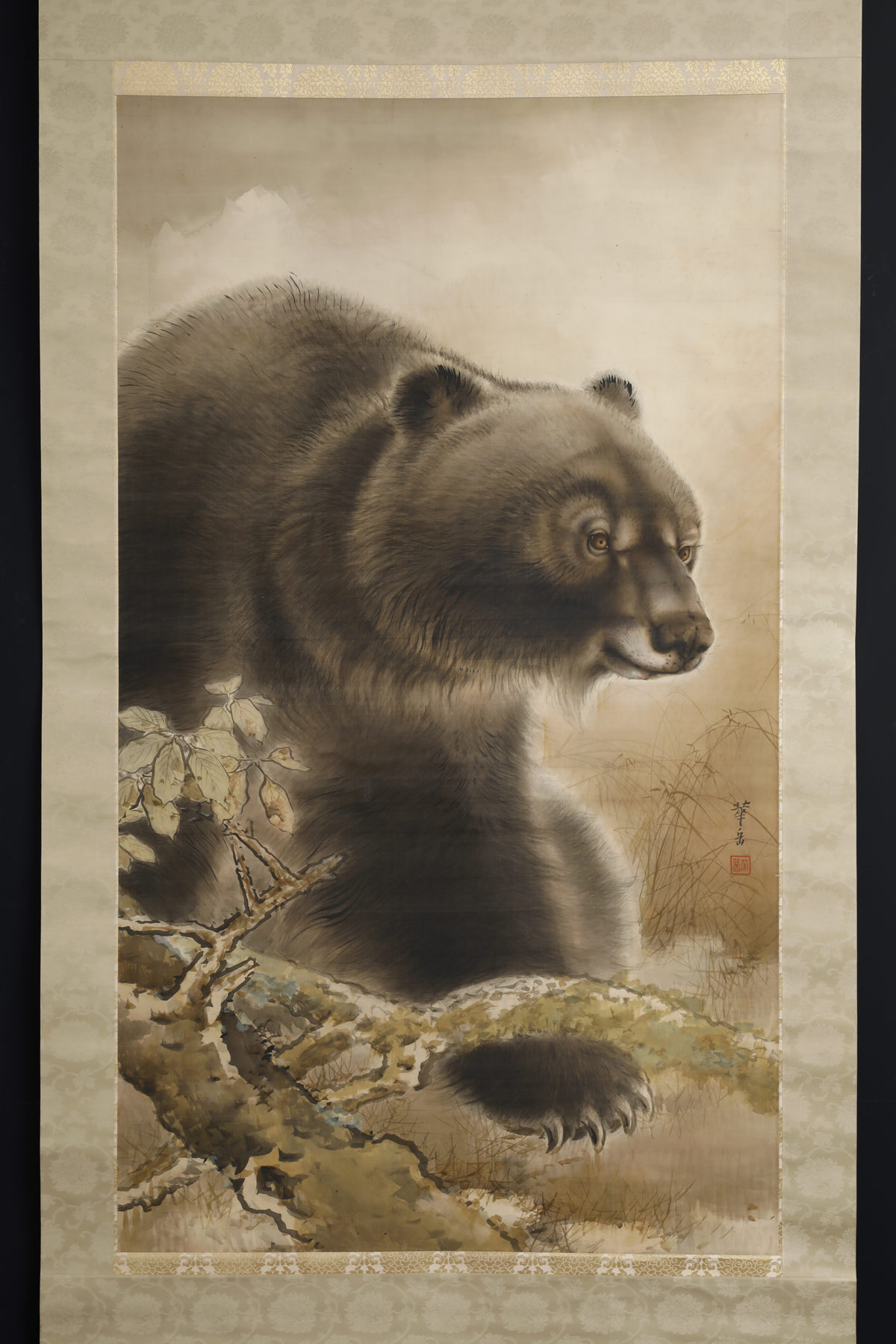
Kagaku Murakami
Brown Bear
1907
Sumi ink and pigments on silk
Collection of the University Art Museum, Kyoto City University of Arts
The tree branches painted into the foreground utilize a thick outline style similar to the Kano school, while the bear behind them features stroke upon stroke of faint and pale tsuketate brushing in the incredibly gentle Shijo school’s style, really bringing out the softness of the fur. Taken from neither the Shijo nor Kano schools, the layering of extremely pale lines here seems rather like a method closer to Western painting. The endeavor to express reality in this way is perhaps one of the stylistic approaches that Kagaku Murakami arrived at within his search for the new. This work is probably based on a shasei sketch made at Kyoto Municipal Zoo (today, Kyoto City Zoo), which opened in 1903 and is regarded as Japan’s second oldest zoological garden. In terms of the distribution and shape of its head and arms, the brown bear is depicted differently than how it would look in reality. Coming closer, we see the artist’s detailed and realistic rendering, such as how he expresses shading with incredibly fine lines. In the eyes that seem strangely human and the facial expression depicted in a very particular way, we detect somewhat unusual forms expression in comparison with the work of other students from around the same time. Kagaku Murakami had the temperament of a prodigy, uninterested in conventional means of expression and instead aspiring to try something new. The work in this sense, though painted when he was very young indeed, shows Murakami at his best.
Kagaku Murakami
Brown Bear
1907
Sumi ink and pigments on silk
Collection of the University Art Museum, Kyoto City University of Arts
The tree branches painted into the foreground utilize a thick outline style similar to the Kano school, while the bear behind them features stroke upon stroke of faint and pale tsuketate brushing in the incredibly gentle Shijo school’s style, really bringing out the softness of the fur. Taken from neither the Shijo nor Kano schools, the layering of extremely pale lines here seems rather like a method closer to Western painting. The endeavor to express reality in this way is perhaps one of the stylistic approaches that Kagaku Murakami arrived at within his search for the new. This work is probably based on a shasei sketch made at Kyoto Municipal Zoo (today, Kyoto City Zoo), which opened in 1903 and is regarded as Japan’s second oldest zoological garden. In terms of the distribution and shape of its head and arms, the brown bear is depicted differently than how it would look in reality. Coming closer, we see the artist’s detailed and realistic rendering, such as how he expresses shading with incredibly fine lines. In the eyes that seem strangely human and the facial expression depicted in a very particular way, we detect somewhat unusual forms expression in comparison with the work of other students from around the same time. Kagaku Murakami had the temperament of a prodigy, uninterested in conventional means of expression and instead aspiring to try something new. The work in this sense, though painted when he was very young indeed, shows Murakami at his best.
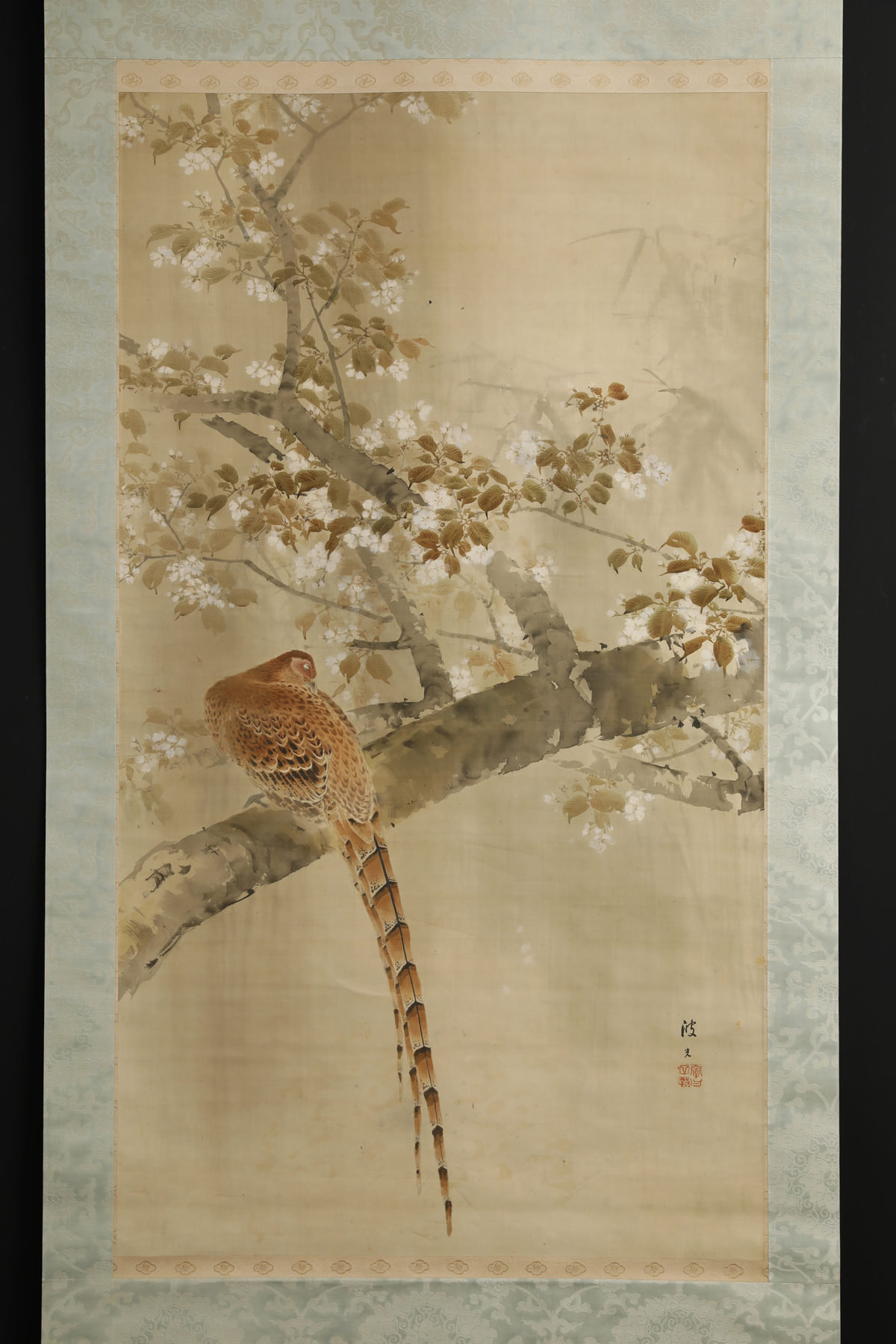

Yohei Watanabe
Foxes
1906
Sumi ink and pigments on silk
Collection of the University Art Museum, Kyoto City University of Arts
Yohei Watanabe was born in Nagasaki as Yohei Miyazaki and came to Kyoto to study nihonga at the Kyoto Municipal School of Arts and Crafts, though he also concurrently studied yoga under Takeshiro Kanokogi. The nature of his work ultimately seems closer to yoga. After training in both the Western and Japanese styles, his final graduation piece was this painting. It depicts a scene in which two foxes are walking away from the foreground into the distance, turned toward the back and not showing their faces. This composition is intriguing, with the foxes walking in the foreground but seen from behind, as if fleeing. The overall construction on the canvas is incredibly skillful in its execution. After graduating, the artist moved to Tokyo and married, taking his wife’s name, Watanabe, and found success as a children’s illustrator. He became a dominant and popular figure in the koma-e illustration genre, along with Yumeji Takehisa, though he also continued to make progress in his career as an oil painter. Despite his immense talents as an artist, he died in his early twenties from illness and exhibited only a few works in his lifetime, with the result that his name is relatively little known today.

Updated 2021.10.31 Sun.
- Hako Irie
- Born in Kamigyo ward, Kyoto, in 1887, Hako Irie graduated from the Kyoto Municipal School of Arts and Crafts in 1905. While a postgraduate student there in 1907, he was accepted into the first Bunten exhibition with Evening Moon. In 1911, he graduated from the Kyoto City Technical School of Painting. After completing graduate studies there, he was commissioned by the school to undertake copies of old paintings at the Tokyo School of Fine Arts and elsewhere. In 1918, he won the National Painting Prize with Mara Descends at the first exhibition of the Society for National Paintings, becoming a member of the society the following year. In 1922, he traveled to Europe. Following the disbanding of the Society for National Paintings in 1928, he left the art world and pursued research into reproductions and ink wash painting, especially Buddhist painting. In 1918, he became an assistant professor at the Kyoto City Technical School of Painting, where he taught from 1934 until his death in 1948.
- Kagaku Murakami
- Born in what is now Kita ward, Osaka City, in 1888, Kagaku Murakami graduated from the Kyoto Municipal School of Arts and Crafts in 1907 and the Kyoto City Technical School of Painting in 1911. Proceeding on to the graduate course at the Technical School of Painting, he studied under Seiho Takeuchi. He displayed an early interest in kabuki, bunraku, and ukiyo-e, and deeply admired Buddhist art. He exhibited for the first time at the Bunten with his painting Donkeys and Summer Grass, winning Third Prize at the second edition in 1908. In 1918, he founded the Society for National Paintings with the likes of Bakusen Tsuchida. He moved to Ashiya in 1923 for convalescence. Returning to his adoptive family in Kobe in 1927, he then concentrated on his solo exhibitions after the disbanding of the Society for National Paintings in 1928. He died in 1939.
- Yohei Watanabe
- Born Yohei Miyazaki in 1889 in Nagasaki City, Yohei Watanabe entered the Kyoto Municipal School of Arts and Crafts in 1902, where he studied nihonga as well as yoga under Takeshiro Kanokogi. He graduated in 1906 and moved to Tokyo, where he studied at Fusetsu Nakamura’s Taiheiyo European Art Research Institute, but returned home the following year due to illness. He moved back to Tokyo in 1908 and was accepted into the Bunten for the first time at the second edition of the exhibition that same year with Kin-san and his Horse Aka. In 1910, at the fourth edition of the Bunten, he won Third Prize for Nell’s Kimono. He became a member of the Taiheiyo European Art Society. From around 1906, he started to work as an illustrator for koma-e inserts in magazines and newspapers, including Hototogisu. His signature illustration style became popular and drew comparisons with Yumeji Takehisa. He died in 1912.

